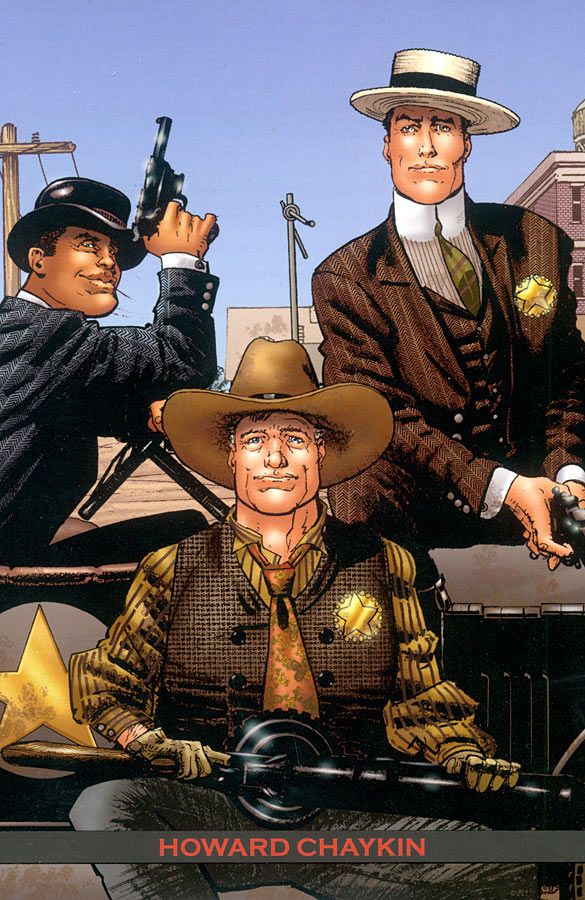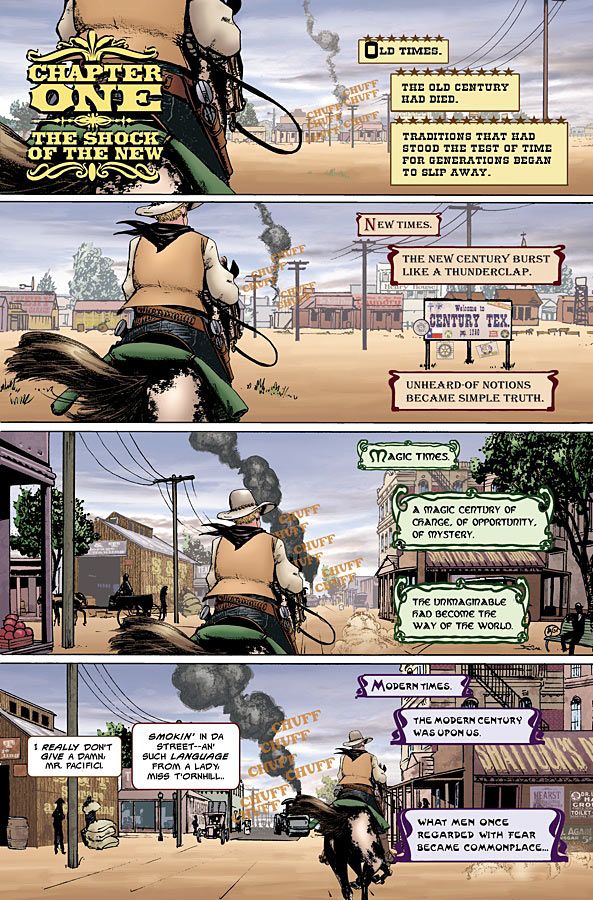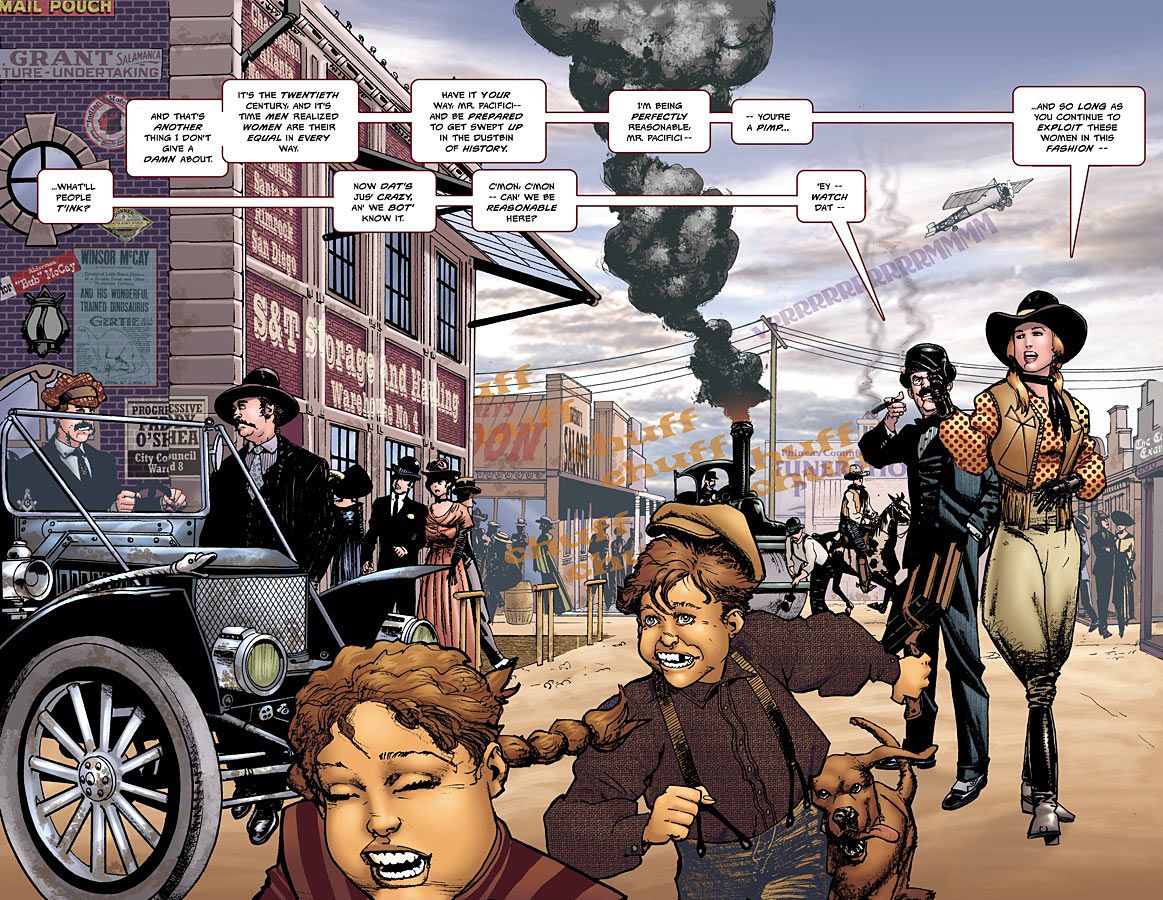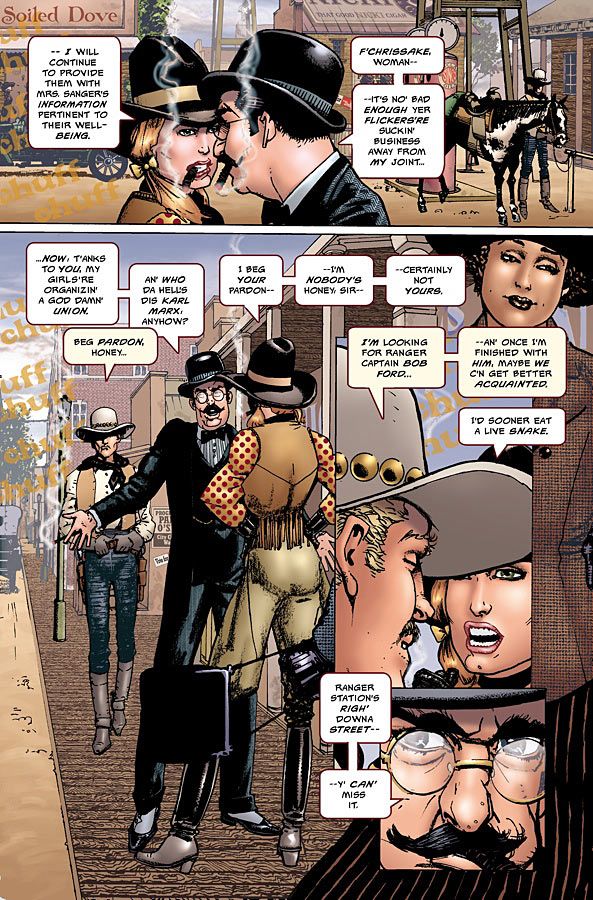Legendary writer/artist Howard Chaykin is ready to ride into the Wild West. The creator of comic books like "American Flagg," "Black Kiss" and the just released "Satellite Sam" has teamed up with Image Comics to release his 64-page, full-color graphic novel "Century West" in English for the first time. The book, originally created for Disney Italia and only published in Italian and Spanish, will make its Stateside debut September 11.
"Century West" focuses on the 20th Century arriving and steamrolling over the 19th Century against the backdrop of the once-sleepy town of Century, Texas. Watched over by a trio of Texas Rangers, Century finds itself not only dealing with a changing world, but also invaded by a new, unknown force: Hollywood.
A self-proclaimed history and pop culture junkie, Chaykin pooled a love for the old west and movies into a graphic novel that prominently features both. CBR News spoke with Chaykin about bringing "Century West" to the States, his bountiful partnership with Image and the project's origins as a TV pilot.
CBR News: "Century West" focuses on a town in Texas as it makes the leap into the 20th Century. What are some of the town's unique elements that play into the story?
Howard Chaykin: I've been working on this concept -- a western that tells the story of the 20th Century body-slamming the 19th -- since the early 1990s.I'm a New York Jew who grew up obsessed with western TV shows and movies and when I began to realize that the modern world came into play so much earlier I could have imagined, it seemed like a natural fit.
And to directly answer your question, there's absolutely nothing unique about Century, Texas, which makes it the perfect setting for this particularly American story.
Have towns like Century survived into the modern age? If so, have you visited any to get a feel for them?
My contention is that Century is a stand-in for every town -- and there you have it.
Can you talk a bit about some of the town's inhabitants who will be playing a part in the graphic novel?
The main characters are three Texas Rangers, each an emigre -- from Saskatchewan, from New Orleans and from New York City.Rangers Ford, DeCarlo and Tabackin are the law in Century and each, in his own way, embraces the assault on their traditional way of life that the 20th Century delivers.
The incredibly strong-willed women in their lives, the local businessmen and politicians -- as well as Pinkertons, Patent Attorneys and Show People -- all serve to complicate an increasingly complex way of life for our heroes.
How does the Hollywood element work its way into the town and when it does, how do the Rangers react to them?
Come on -- that's the plot spine that runs through the entire book.I can't even begin to talk about that here.
Between "Black Kiss" and "Satellite Sam" you've dealt with the influence Hollywood and the entertainment industries can have on people. What keeps you coming back to that theme in your work?
I am as in love with Hollywood and the show business as any five people I know.
I'm obsessed with television -- for good and evil -- and all too many of my boyhood memories are of a filthy old movie theater showing second run movies in Brooklyn, with kids on one side and junkies smoking, shooting up and shouting at the screen on the other.
The romantic promise of the American songbook defines my first twenty-five years of adult life.
I'm also on record as saying that it took me years to get over the crushing realization that the promises of romance, true love and happiness fed to me by the songbook, television and the movies was all bullshit, and I was on my own.
That said, like a junkie with smack, I'm an addict.
And in the case of "Century West," in particular, I believe that the movies were the last great creation of the American West -- and that, ultimately, the West was tamed so that it could be filmed.
Was there a particular story, real life event or place that helped spark the idea for "Century West?"
The source is an odd one.
I was listening to Van Morrison doing a cover version of an old pop song called "It's All in the Game," made popular by Tommy Edwards. When I checked to see who'd written it, I was stunned to learn the tune was composed by Calvin Coolidge's Vice President, Charles Dawes, in 1911. The fact that this song had existed musically before the first World War started me thinking -- and the more I read about that period between, say, 1903, when the Wrights flew, and 1914, when the first World War began -- the more I realized that modernity was older than I'd ever believed.
Did "Century West" always exist as a graphic novel or were there earlier incarnations as a miniseries or a different format altogether?
"Century West" started its life as a pilot concept for Paramount television, which went away during a change in management.It remained in my concept book, however -- I've always loved this idea.
How far along did "Century West" get in the pilot process? What made you finally return to it as a graphic novel?
I got as far as a pilot pitch proposal, which consisted of an act breakdown for a premise pilot, character bible and a year's worth of episodes for what was in those days a 22-episode season.
As I say, it died, and that was that.
In 2005, I was solicited by Disney Italia to pitch a graphic novel series.I pitched three concepts and they went for "Century West." The book has been available in Italian and Spanish since 2006, and I'm delighted that Image will be bringing the book out in English for the first time.
When you have an idea for something like "Century West," how far along in the creative process do you get before talking to a publisher about publishing the story?
Pretty damned far.
You said you came up with a season's worth of stories for the proposed TV series -- do you have more "Century West" graphic novels in mind?
While I was in Adelaide this past November, I did a two hour walk every morning -- and on my second to last day in Australia, I came up with the perfect sequel to "Century West" -- and I'm ready to do it whenever anybody will let me.
So, yes -- there's lots of story to these characters.
In the past few years, you seem to have made a nice home for yourself at Image when it comes to creator-owned work. How has the experience been so far?
Actually, by my calendar, it's just a bit more than a year.And needless to say, with "Satellite Sam," the "Black Kiss Christmas Special," "Black Kiss 3" and "Midnight of the Soul," I'm delighted to be working with the men and women of Image.
You also recently worked on the Haunted Tank feature in "G.I. Combat" for DC Comics. What drew you to that project and what was the experience like?
Peter's script was a great deal of fun, and I love working with Joey Cavalieri, who is a terrific editor.
When it comes to work for hire gigs like that, what criteria do you look for when considering the job?
How big a pain in the ass the writer and editor will be -- see answer to previous question.
Howard Chaykin's 64-page full-color graphic novel "Century West" will be available for the first time in English from Image Comics on September 11.





